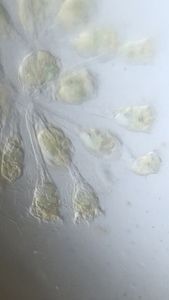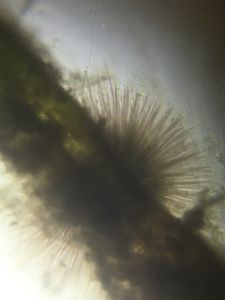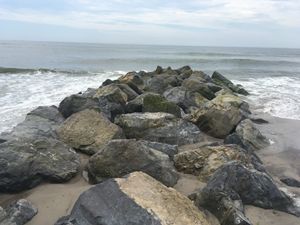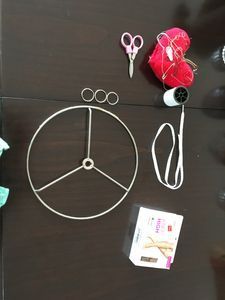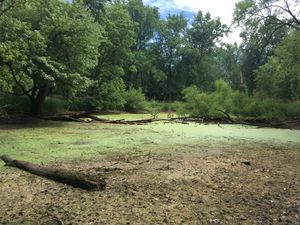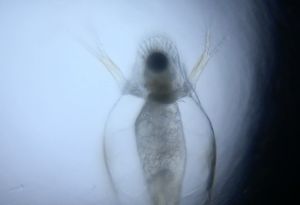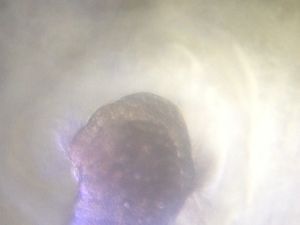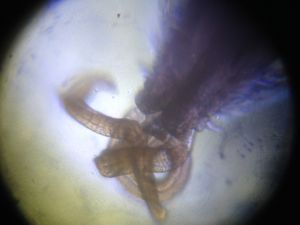The Four Lives of the Crab
 Sep 03, 2015 • 9:28 AM UTC
Sep 03, 2015 • 9:28 AM UTC United States
United States 140x Magnification
140x Magnification Microorganisms
Microorganisms
Matthew Rossi
I'm a novelist, essayist, and a writing consultant. I work in the writing centers at Columbia and Baruch University and explore research into the overlap of maker cultures and writing. My work with the Foldscope tends to focus on finding wild creatures in urban spaces and looking at how human works are shaped by the movements of the biosphere.
40posts
105comments
4locations

This summer, I had the wonderful opportunity to visit St. Simon’s island in Georgia for a family vacation. Aside from the warm weather and the good company, the ocean was very warm and the low tides left deep, murky tidal pools perfect for hunting for plankton. Most mornings, while other people were out hunting for shells on the exposed sandbars, I waded in the silty water with a nylon stocking and a collecting jar to see what I could find. As a result, I caught many kinds of plankton, which I’ll post here over time, but I was most excited to observe crabs in each of the three larval parts of their lives.
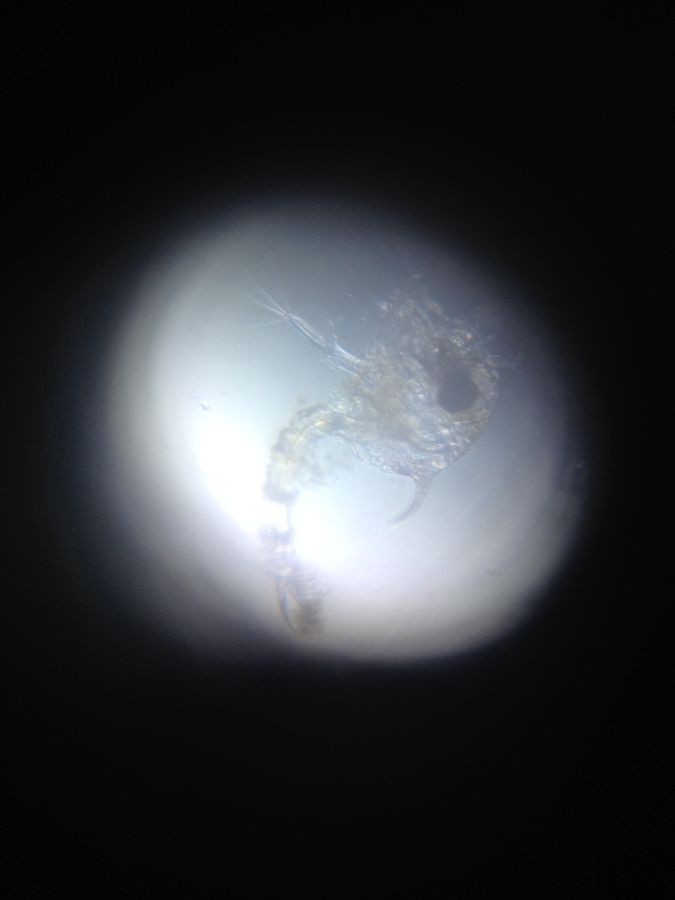
Zoea

Naupilius

Megalopa
When the zoea and the naupilius forms of crustaceans were first discovered, it was generally assumed they were a whole new species, unrelated to anything known. Presumably it was not until someone observed a zoea in captivity for long enough to observe it turning into a crab that it was understood that these were actually part of a larger (and stranger) cycle of life that the crab went through, one that involved a portion of life spent drifting and struggling through the tides.
When the zoea and the naupilius forms of crustaceans were first discovered, it was generally assumed they were a whole new species, unrelated to anything known. Presumably it was not until someone observed a zoea in captivity for long enough to observe it turning into a crab that it was understood that these were actually part of a larger (and stranger) cycle of life that the crab went through, one that involved a portion of life spent drifting and struggling through the tides.
Kudos to the scientists who figured out this full pattern of the crab’s life, and for their willingness to see the mistakes made in their predecessors’ assumptions, not as a thing that needed to be defended, but as part of the purpose of science. To search and to discover and to reconsider always the things we never knew.
Sign in to commentNobody has commented yet... Share your thoughts with the author and start the discussion!
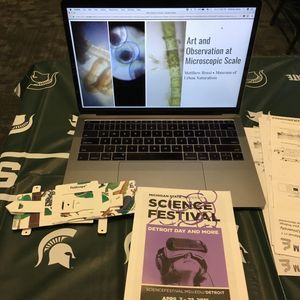
 0 Applause
0 Applause 0 Comments
0 Comments




